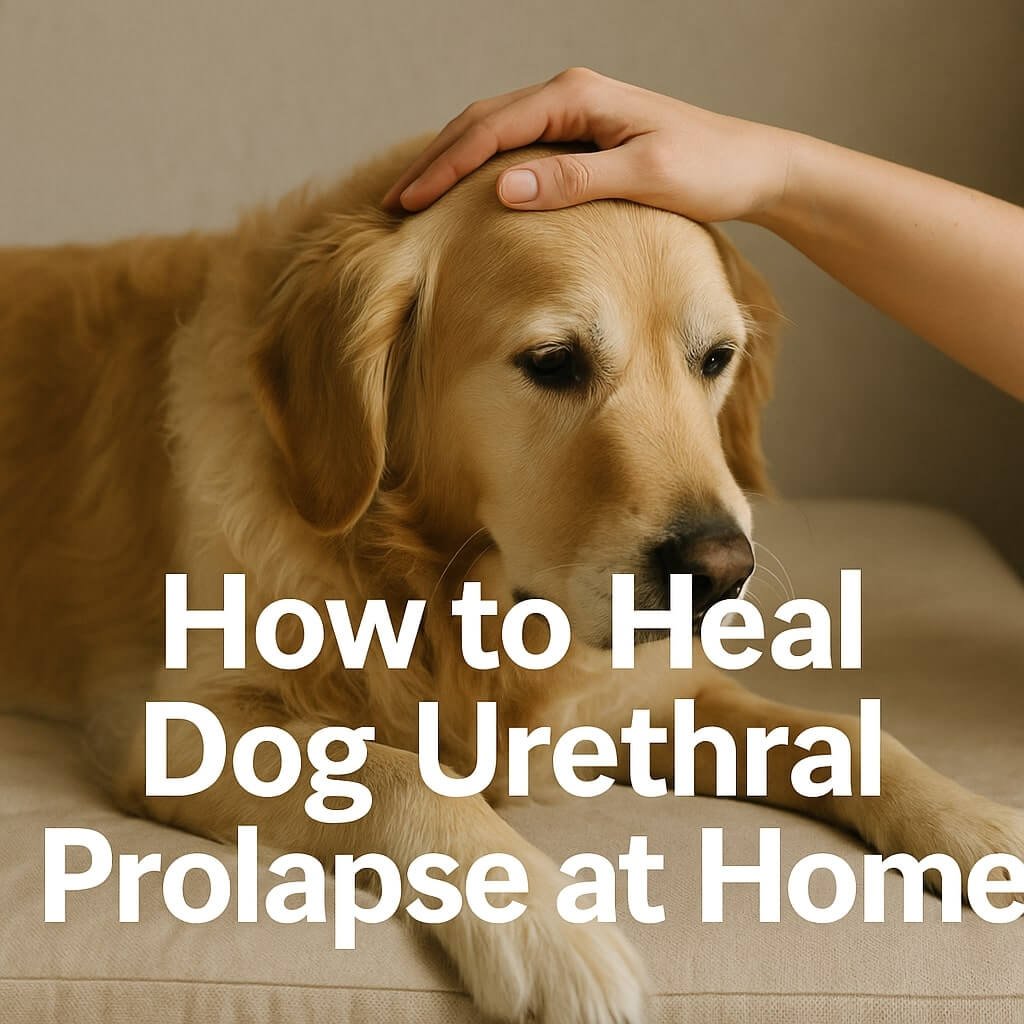Urethral prolapse in dogs is a medical condition that affects the urinary system, causing part of the urethra to protrude outside the body. While this condition often requires professional veterinary care, there are home remedies and supportive care measures that can help your dog heal faster and more comfortably. In this guide, we’ll explore what urethral prolapse is, how to identify it, and what steps you can take at home to promote healing.
Introduction to Dog Urethral Prolapse
If your dog is showing signs of urethral prolapse, it’s important to act quickly and understand the basics of the condition. Urethral prolapse occurs when the urethra, which is the tube that carries urine from the bladder to the outside of the body, slips out of its normal position. This condition is most commonly seen in male dogs but can affect females as well.
What is Urethral Prolapse in Dogs?
Urethral prolapse happens when a portion of the dog’s urethra, usually located near the tip of the penis, protrudes outside the body. The prolapsed tissue can become swollen and inflamed, leading to discomfort and potential complications such as infection or urinary blockages.
Common Symptoms of Urethral Prolapse in Dogs
Some of the common signs that your dog may have a urethral prolapse include:
- Swelling or a red mass at the tip of the penis
- Difficulty urinating or frequent attempts to urinate
- Blood in the urine
- Licking or chewing at the genital area
- Signs of discomfort or pain
If you notice any of these symptoms, it’s important to seek advice from a veterinarian immediately.
Causes and Risk Factors for Urethral Prolapse in Dogs
Several factors can contribute to the development of urethral prolapse in dogs. Understanding these causes can help in managing the condition and preventing future occurrences.
Genetic Factors and Breed-Specific Risks
Certain dog breeds are more predisposed to developing urethral prolapse, including Bulldogs, Pugs, and Boxers. These breeds tend to have a genetic predisposition for anatomical abnormalities that may increase the risk of prolapse.
Hormonal Imbalances in Dogs
In some cases, hormonal imbalances, particularly low testosterone levels, can lead to weakening of the tissues around the urethra, making them more prone to prolapse. Unneutered male dogs are at a higher risk due to hormonal influences.
Diagnosing Urethral Prolapse in Dogs
If you suspect your dog has a urethral prolapse, a veterinarian will need to conduct a thorough examination to confirm the diagnosis.
How Veterinarians Diagnose Urethral Prolapse
Diagnosis typically involves a physical exam, during which the vet will observe the protrusion of the urethra. In some cases, diagnostic imaging such as X-rays or ultrasounds may be used to assess the extent of the prolapse and rule out other conditions.
Diagnostic Tests for Urethral Prolapse
In addition to a physical examination, your vet may recommend urinalysis or blood tests to check for signs of infection or other underlying issues that could complicate the prolapse.
Healing Dog Urethral Prolapse at Home
While urethral prolapse generally requires veterinary intervention, there are several steps you can take to help your dog recover more comfortably and reduce the risk of complications.
Step 1: Keeping the Area Clean and Dry
To prevent infection and further irritation, it’s important to keep the affected area clean and dry. You can gently clean the area with a mild saline solution and pat it dry with a soft cloth.
Step 2: Managing Pain and Discomfort
If your dog is in pain, your vet may recommend pain relief medications. Do not give your dog over-the-counter painkillers meant for humans, as they can be toxic to dogs. Always follow the vet’s guidance for pain management.
Step 3: Using Home Remedies and Natural Treatments
Some dog owners choose to use natural remedies to soothe inflammation and promote healing. Herbal extracts like calendula and aloe vera can help reduce swelling and discomfort when applied topically in moderation. Always consult with your vet before using any natural treatments.
When to Seek Professional Veterinary Help
While home care can assist in the healing process, there are times when professional veterinary intervention is necessary.
Signs That Require a Visit to the Vet
- Persistent swelling or bleeding
- Difficulty urinating or a complete inability to urinate
- Worsening pain or signs of infection
- If your dog’s prolapse does not seem to improve with home treatment
What to Expect During Veterinary Treatment
Veterinary treatment for urethral prolapse may involve surgical correction or the use of medications to manage the condition. In more severe cases, surgery may be required to reposition the urethra and prevent recurrence.
Preventing Urethral Prolapse Recurrence in Dogs
Once your dog has healed from urethral prolapse, it’s important to take preventive measures to reduce the chances of it happening again.
Diet and Hydration for Urethral Health
A proper diet and good hydration are crucial in supporting urinary health. Make sure your dog has access to clean water at all times and feeds them a balanced diet that promotes healthy bladder function.
Regular Vet Check-ups and Preventive Measures
Regular vet check-ups, especially for dogs at higher risk, are important for monitoring urinary health and detecting potential issues before they become serious.
FAQs About Dog Urethral Prolapse
What Causes Urethral Prolapse in Dogs?
Urethral prolapse can be caused by several factors, including genetic predispositions, hormonal imbalances, and trauma to the area. Unneutered dogs are at a higher risk due to hormonal changes.
Can Dog Urethral Prolapse Be Prevented?
While you can’t always prevent urethral prolapse, spaying or neutering your dog can help reduce the risk, particularly in male dogs. Regular vet visits and proper care can also help detect early signs and prevent complications.
How Long Does It Take for a Dog to Recover from Urethral Prolapse?
Recovery time can vary depending on the severity of the prolapse and the treatment used. With proper care, your dog may start to feel better within a few days to weeks.
Can You Treat Dog Urethral Prolapse Without Surgery?
In some cases, non-surgical treatments such as medications and home care may be effective in managing the condition. However, surgery may be necessary in more severe cases.
Is Urethral Prolapse Common in Certain Dog Breeds?
Yes, certain dog breeds, especially Bulldogs, Pugs, and Boxers, are more prone to urethral prolapse due to genetic and anatomical factors.
How Can You Help Your Dog Feel Comfortable During Healing?
Keeping your dog’s environment calm and stress-free, ensuring they have a comfortable resting area, and managing their pain with appropriate medications can all help your dog feel more comfortable during recovery.
Conclusion
While urethral prolapse in dogs is a serious condition, it can be managed effectively with a combination of professional veterinary care and home remedies. By following the steps outlined in this guide, you can help your dog heal and prevent further complications. Always consult with a veterinarian for personalised advice and treatment options for your pet’s specific needs.













